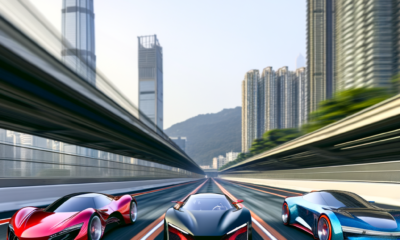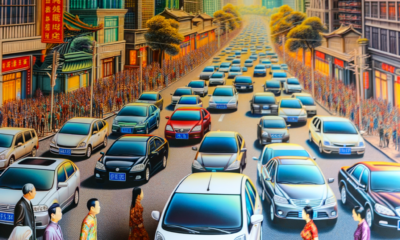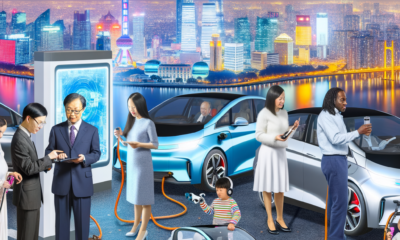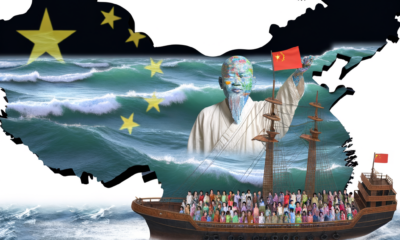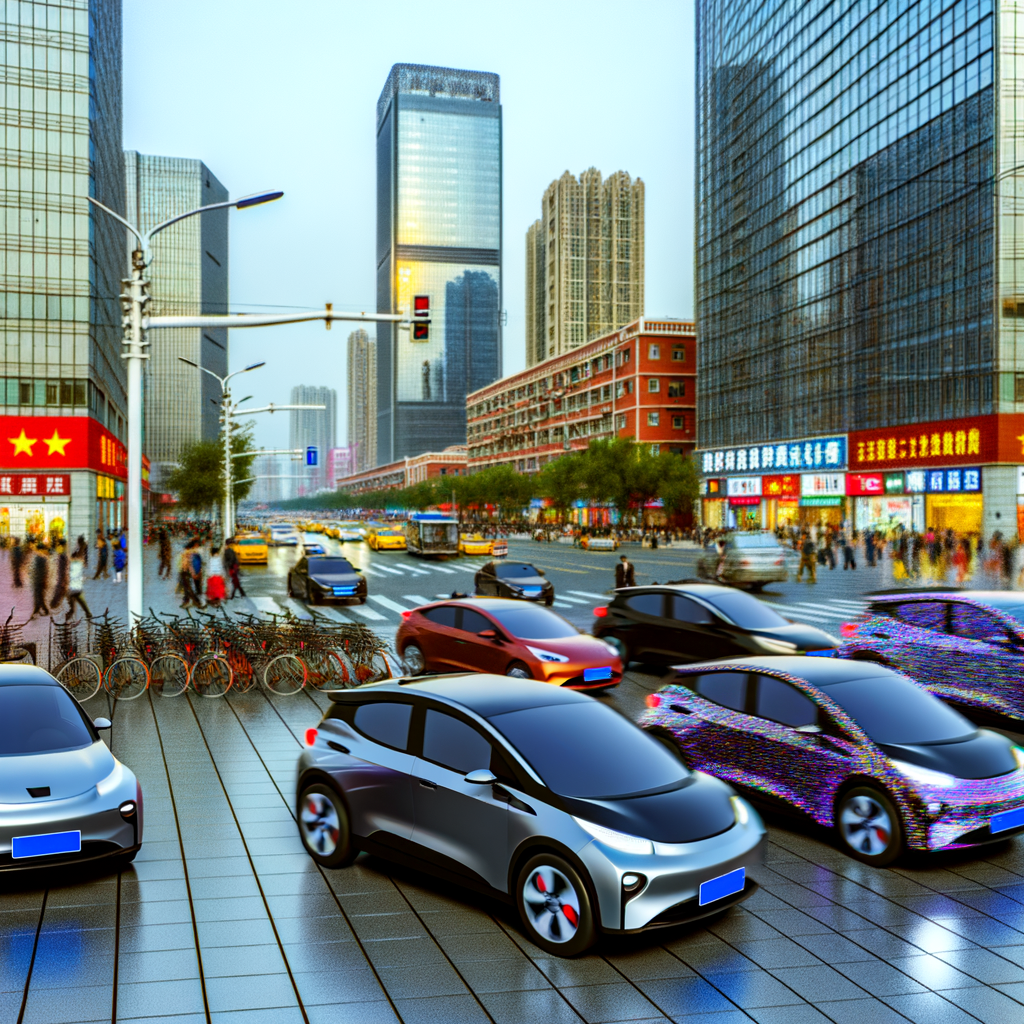
Driving into the Future: How Top Brands Conquer China’s Largest Automotive Market Amid EV Boom and Regulatory Challenges
China, the world's largest automotive market, offers vast opportunities and challenges for both domestic car brands and foreign automakers, driven by its growing economy, rapid urbanization, and heightened environmental concerns. The surge in demand for Electric Vehicles (EVs) and New Energy Vehicles (NEVs), backed by significant government incentives, highlights the importance of understanding the complex regulatory landscape and fostering strategic partnerships through joint ventures. These collaborations are key to aligning with consumer preferences, leveraging technological advancements, and navigating market competition. Success in this dynamic market requires adapting to regulatory requirements, capitalizing on government visions, and leveraging local expertise, presenting unparalleled opportunities for growth and innovation in the automotive sector.
In the bustling streets of China's rapidly urbanizing cities, the roar of automotive innovation and market evolution is palpable. As the world's largest automotive market, China stands at the forefront of an industry revolution, driven by a unique blend of a growing economy, escalating environmental concerns, and a burgeoning middle class with a voracious appetite for both domestic car brands and foreign automakers' latest models. The country's automotive sector is a hotbed of activity, characterized by a dynamic shift towards Electric Vehicles (EVs) and New Energy Vehicles (NEVs), spurred by significant government incentives aimed at reducing carbon footprints. This transformative landscape offers unparalleled opportunities and formidable challenges, requiring a deep dive into the intricacies of strategic partnerships, the regulatory landscape, consumer preferences, and technological advancements that are shaping the future of mobility.
Navigating China's automotive market is akin to participating in a high-stakes race, where understanding the complex interplay of market competition, joint ventures, and the pulse of Chinese consumer demands is crucial. Foreign automakers, in pursuit of tapping into this lucrative market, often find themselves forging alliances with local titans, a testament to the critical role of strategic partnerships in overcoming the hurdles posed by the regulatory landscape. At the same time, domestic brands are not far behind, leveraging technological advancements and innovation to compete head-on with global giants, all while aligning with the government's push towards electrification and green energy.
This article embarks on an exploratory journey into the heart of the largest automotive market in the world, dissecting the factors that contribute to its dominance—from the surge of EVs and NEVs, driving towards a greener future, to the intricate dance of competition and collaboration among industry players. With urbanization and a growing economy fueling demand, and environmental concerns steering the industry towards sustainable practices, China's automotive market is a fascinating study of contrasts and confluences. Join us as we delve into the complexities and opportunities that define this vibrant sector, offering insights into how businesses can navigate, innovate, and thrive in the ever-evolving landscape of China's automotive industry.
1. Navigating the World's Largest Automotive Market: China's Unprecedented Growth and Opportunities

Navigating the complexities and seizing the opportunities within China's automotive sector requires an astute understanding of its position as the world's largest automotive market. At the helm of this dynamic landscape is the nation's rapidly expanding economy, bolstered by significant urbanization and a burgeoning middle class. These elements have not only propelled demand for a wide range of vehicles but have also cemented China's pivotal role on the global automotive stage.
The preference for Electric Vehicles (EVs) and New Energy Vehicles (NEVs) is particularly pronounced, fueled by robust government incentives and a growing environmental consciousness among consumers. This shift towards greener alternatives has opened up new avenues for both domestic car brands and foreign automakers, eager to tap into the lucrative market that China presents. The allure of the Chinese market is not without its challenges, however. The regulatory landscape here is notably complex, requiring foreign entities to enter strategic partnerships, often in the form of joint ventures, with local Chinese companies. These alliances are not merely a regulatory formality but a vital strategy to navigate market nuances, meet consumer preferences, and leverage local expertise.
Consumer preferences in China are as diverse as they are dynamic, influenced heavily by technological advancements and the latest market trends. The appetite for innovation within the automotive sector is significant, pushing companies to constantly evolve and adapt their offerings to stay competitive. This competition is not just about the latest car model or the most advanced EV technology; it's also about which company can most effectively align with the government's vision for the industry and society at large.
The strategic partnerships formed between foreign and domestic firms are crucial in this regard. They allow for a sharing of technology, resources, and market insights, enabling companies to better align with the regulatory expectations and consumer demands. Moreover, these collaborations can significantly reduce the barriers to entry for foreign automakers, providing a more straightforward path to tapping into China's vast consumer base.
Understanding the Chinese automotive market's intricacies is no small feat. It demands a deep dive into the local regulations, an acute awareness of consumer behaviors, and a keen eye on the competitive landscape. Yet, for those who manage to navigate its complexities, the rewards can be substantial. The growing economy, coupled with the push towards urbanization and environmental sustainability, continues to drive the market forward, presenting unparalleled opportunities for growth and innovation in the world's largest automotive market.
In conclusion, the journey through the world's largest automotive market unveils a landscape teeming with opportunities and challenges, driven by China's growing economy, increasing urbanization, and a burgeoning middle class. As the epicenter of automotive production and sales, China commands attention with its high demand for both domestic car brands and foreign automakers, the latter often entering the market through strategic joint ventures to navigate the complex regulatory landscape. The surge in consumer preferences for electric vehicles (EVs) and new energy vehicles (NEVs), backed by substantial government incentives and growing environmental concerns, underscores the market's dynamic shift towards sustainable mobility solutions.
The competitive edge in this market is sharpened by a deep understanding of consumer behavior, technological advancements, and the ability to forge strategic partnerships. Foreign automakers and domestic players alike must align with China's ambitious environmental goals while catering to the unique needs of its consumers to make a mark in this highly competitive arena. The Chinese automotive market, characterized by its rapid pace and influenced by global economic trends, requires a meticulous approach to navigate its complexities successfully.
As we look to the future, the trajectory of China's automotive market promises to reshape the global automotive landscape. The emphasis on EVs and NEVs, coupled with the country's vast consumer base and the push for innovation, sets the stage for transformative growth and opportunities. For stakeholders aiming to thrive in the largest automotive market, the path forward involves a continuous adaptation to the evolving regulatory landscape, consumer preferences, and technological trends. China's automotive sector, a blend of tradition and innovation, invites a collaborative and forward-thinking approach to harness its full potential, making it a pivotal arena for shaping the future of global mobility.
Discover more from Automobilnews News - The first AI News Portal world wide
Subscribe to get the latest posts sent to your email.

China
Climate Crossroads: Navigating the Uncertainties of Trump’s Return, COP29 Dynamics, and China’s Green Ambitions

Open Issues | Trump, COP29, and Ma Jun's Optimistic Outlook on Environmental Progress
Founder of an NGO describes how a mapping project is instrumental in making governments and corporations responsible for their carbon emissions and any deceptive practices.
This represents another challenge for worldwide climate management, as the United States, being the second largest emitter of greenhouse gases following China, plays a crucial role in international collaboration.
Nations are required to present their updated nationally determined contributions (NDCs) to the United Nations by February. [NDCs are commitments by individual countries to reduce greenhouse gases under the Paris Agreement.] There is speculation that the US might once again exit the Paris Agreement. It remains uncertain whether the US will submit its NDCs prior to a potential second Trump administration, and even if it does, the fulfillment of these commitments is not guaranteed. Additionally, given the United States' significant role in various international governance frameworks, its potential departure could also hinder the incorporation of worldwide climate efforts within these structures.
The collaboration between China and the United States at both national and federal tiers, as well as previous accords such as the one established at last year's Sunnylands summit, could be impacted as well.
This implies that collaborations between lower governmental levels or within the private sectors, such as the partnership between California and China, along with initiatives by American and Chinese firms to enhance green and low-carbon supply chains, will gain increased significance.
Duration: 40
Trump Returns: Exploring Future Implications for China, Asia, and the Global Stage | Talking Post with Yonden Lhatoo
Discover more from Automobilnews News - The first AI News Portal world wide
Subscribe to get the latest posts sent to your email.
China
Crackdown on Corruption: China Targets Police Misconduct Amid Economic Challenges and Nationwide Push to Protect Entrepreneurs

Amid economic challenges, China intensifies oversight on police misconduct towards businesses
Prosecutors caution against deceptive practices by law enforcement designed to defraud entrepreneurs and firms across various regions
Prosecutors caution against deceptive practices by law enforcement designed to defraud entrepreneurs and firms across various regions
The document sheds light on an incident from last May, where two members of the public security department in an undisclosed province were implicated in extorting funds from business owners in Zhejiang and Jiangsu, as disclosed by the prosecutor's office of Zhejiang province on Wednesday.
The issue emerged during a countrywide initiative started in February by China's chief prosecutor to enhance legal safeguards for private enterprises, as Beijing seeks to stimulate expansion amidst economic challenges.
According to the report, a police officer identified by the last name Yang and an auxiliary officer with the surname Zhan, both dressed in police attire and equipped with items such as handcuffs and body cameras, traveled to different provinces. They purported to assist entrepreneurs with legal matters as a guise to seek financial benefits.
Discover more from Automobilnews News - The first AI News Portal world wide
Subscribe to get the latest posts sent to your email.
China
Crackdown on Corruption: China Targets Police Abuse and Deceptive Practices Amid Economic Challenges
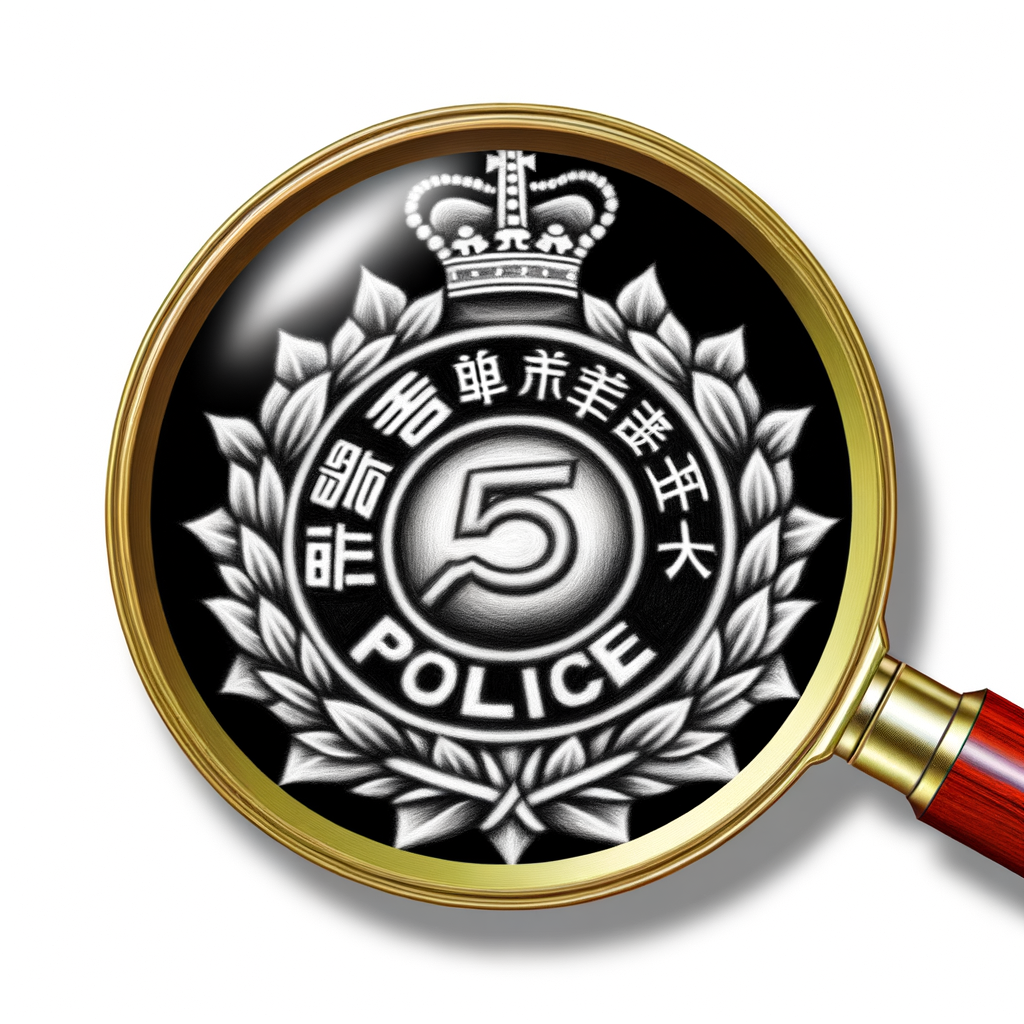
Amid economic challenges, China intensifies measures against police misconduct affecting businesses
Prosecutors caution about deceptive practices by law enforcement designed to defraud business owners and firms in various regions
The statement released on Wednesday by the prosecutor's office in Zhejiang province sheds light on an incident from May of the previous year. It involved two members of the public security department from an undisclosed province who were implicated in demanding bribes from business owners in Zhejiang and Jiangsu provinces.
The situation emerged during a countrywide initiative, started in February by China’s chief prosecutor, aimed at enhancing legal safeguards for privately-owned firms as Beijing seeks to stimulate economic expansion amidst challenging financial conditions.
The report states that a police officer, identified by the last name Yang, and an auxiliary officer with the last name Zhan, wore their police uniforms and equipped themselves with items such as handcuffs and body cameras. They then traveled to various provinces, allegedly offering assistance on legal matters to entrepreneurs as a guise to obtain financial benefits.
Discover more from Automobilnews News - The first AI News Portal world wide
Subscribe to get the latest posts sent to your email.
China
China’s Ambitious $1 Billion SinoProbe II Project: Aiming to Secure Resource Independence with Groundbreaking Geoscience Survey

China has announced an ambitious plan to conduct an extensive geoscience survey dubbed SinoProbe II, aimed at discovering natural resources. The project, which boasts a staggering budget of US$1 billion, will span six years and employ thousands of scientists to develop a detailed underground map of the nation.
The project, named SinoProbe II, involves an investment of $1 billion to develop an underground map of the nation, as reported by Science magazine on Monday.
Numerous scientists from various organizations are set to collaborate on a project under the guidance of the China Geological Survey, aiming to achieve unprecedented drilling depths for their research.
According to the report, its goal is to assist the nation in decreasing its reliance on imported fossil fuels and minerals such as iron and aluminum.
"Dong Shuwen, a geologist at Nanjing University and the brains behind the SinoProbe project, emphasized the importance of securing resources," it was reported.
Discover more from Automobilnews News - The first AI News Portal world wide
Subscribe to get the latest posts sent to your email.
China
Beijing Employs AI in Battle for Global Narrative: Experts Urge Precision in Countering Western Media Stereotypes

Experts advocate for Beijing to utilize AI and algorithms to enhance official communications and counteract Western media narratives. A full-page feature in the People’s Daily emphasized the importance of refining information campaigns to effectively challenge and dispel global stereotypes.
The state-run People's Daily, a publication of the Communist Party, has urged the nation to utilize artificial intelligence to counteract narratives led by the U.S. about China. This call to action was emphasized through multiple front-page stories published on Friday.
In a piece, Tang Jingtai, an academic at Fudan University's journalism department, emphasized the significance of employing data and algorithms to bolster China's digital information initiatives.
He highlighted the adoption of AI technologies and analytical systems to "improve the effectiveness and precision" of campaigns, aiming to "shift the distribution of information from conventional approaches to a more industrialized and intelligent method."
He mentioned that these tools might enable a transformative change, moving from the conventional model of "people looking for information" to "information looking for people."
Discover more from Automobilnews News - The first AI News Portal world wide
Subscribe to get the latest posts sent to your email.
China
China’s 2029 Vision: Building a Secure and Efficient National Data Infrastructure
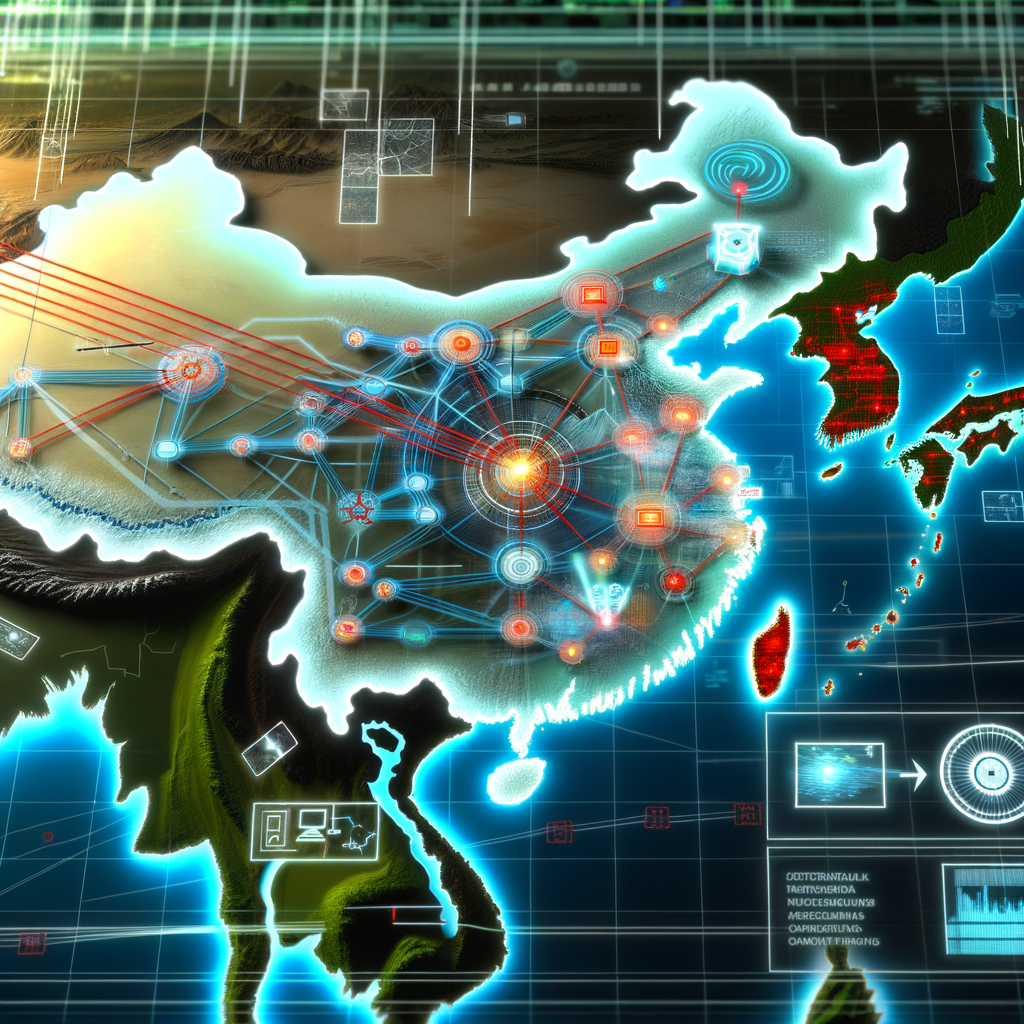
China aims to establish a nationwide data infrastructure by 2029. The proposed guidelines emphasize the importance of creating a secure framework for data sharing, with a focus on protecting sensitive information that could impact national security.
China's statistics bureau has unveiled a comprehensive strategy to establish a nationwide digital framework by 2029, aimed at treating data as a crucial asset.
Based on preliminary guidelines issued by the National Data Administration last Friday, the expansion of the digital economy has heightened the need for "improved data flow, utilization, and value realization," emphasizing the importance of proactive government involvement and an effective market system.
The report outlines a goal to establish a nationwide data framework that prioritizes both effectiveness and fairness, adapts to the specific qualities of data components, and captures the benefits and usefulness of data.
Compiled by the National Development and Reform Commission in collaboration with the Ministry of Industry and Information Technology, the guidelines are available for public review until December 1.
Discover more from Automobilnews News - The first AI News Portal world wide
Subscribe to get the latest posts sent to your email.
China
Shanghai Court Affirms Cryptocurrency Ownership Rights Amid Regulatory Confusion and Market Volatility

A Shanghai court has declared that owning cryptocurrency is legal under Chinese law, coinciding with a rise in bitcoin prices. A judge in Shanghai stated in a ruling on a recent legal case that cryptocurrencies possess the characteristics of property, thereby making their possession lawful.
Beijing views cryptocurrencies as a risk to financial stability, and any business dealings involving these assets are still prohibited on the mainland, casting uncertainty over their legal status.
In his writing, Sun stated that while Chinese law does not forbid owning cryptocurrency, as it possesses characteristics similar to property, this allowance does not apply to commercial activities. These activities could potentially disturb the economic and financial stability or be utilized in unlawful transactions, the judge explained.
"Sun stated in his commentary that this is the reason why strict enforcement and regulatory measures are consistently applied to speculative practices in cryptocurrency trading."
Discover more from Automobilnews News - The first AI News Portal world wide
Subscribe to get the latest posts sent to your email.
China
Former Central Bank Official Caught in China’s First Cryptocurrency Corruption Scandal

China's inaugural crypto-related corruption case involves ex-central bank official
Former official Yao Qian faces allegations of misusing his role at the China Securities Regulatory Commission, constituting a 'grave violation of duty'
Yao, who oversaw the department at the CSRC that handled data and cybersecurity regulations and the formulation and execution of regulations for securities, futures, and fund sectors, is under suspicion for involvement in crimes related to bribery, as per the announcement made on Wednesday.
The Central Commission for Discipline Inspection (CCDI) stated that Yao, masquerading as an expert in financial technology, tirelessly promoted certain tech service providers for his own benefit.
According to the CCDI, Yao voluntarily made himself "a prime target for those looking to exploit him." He is accused of employing digital currencies to facilitate the trade of influence and money.
Yao is alleged to have misused his authoritative role, aiding technology firms in growing their operations in exchange for covering his personal costs, and unlawfully receiving substantial sums of money.
The Central Commission for Discipline Inspection (CCDI) announced that Yao has been removed from the Communist Party and relieved of his public duties, with all improperly acquired assets seized. The prosecutorial body will now examine the case to determine if criminal charges should be filed against him.
Discover more from Automobilnews News - The first AI News Portal world wide
Subscribe to get the latest posts sent to your email.
China
Inside Beijing’s Playbook: Ex-Ambassador Fu Ying Reveals Strategies for Handling ‘Biased’ Foreign Media

Former Chinese ambassador shares unique perspectives on Beijing's approach to international journalism
Fu Ying, previously serving as vice-minister of foreign affairs, expresses in a party publication that the most effective strategy is to counter and question 'prejudiced' inquiries.
A previous envoy from China has offered her advice on interacting with international journalists in a piece for a publication linked to the Communist Party, providing a unique glimpse into the perspectives of the nation’s top diplomats.
"During my tenure as ambassador to Australia, I agreed to an interview. The journalist, whose family had emigrated from an Eastern European nation, displayed animosity towards any nation under communist rule," Fu stated.
Fu mentioned that throughout the three-hour interview, the journalist expressed doubts regarding China, and upon publication, the article portrayed the nation in a negative light and labeled her as a “stubborn communist.”
Since that time, Fu, who has served as ambassador to both the Philippines and Britain, mentioned that she now conducts extensive background checks on interviewers and assesses their motives before agreeing to interviews.
She also expressed that it was crucial to steer the direction of the interview, such as by posing rhetorical questions instead of responding to inquiries that were driven by prejudice.
Discover more from Automobilnews News - The first AI News Portal world wide
Subscribe to get the latest posts sent to your email.
China
Driving Success in the East: Mastering the World’s Largest Automotive Market Amidst EV Revolution and Regulatory Complexities
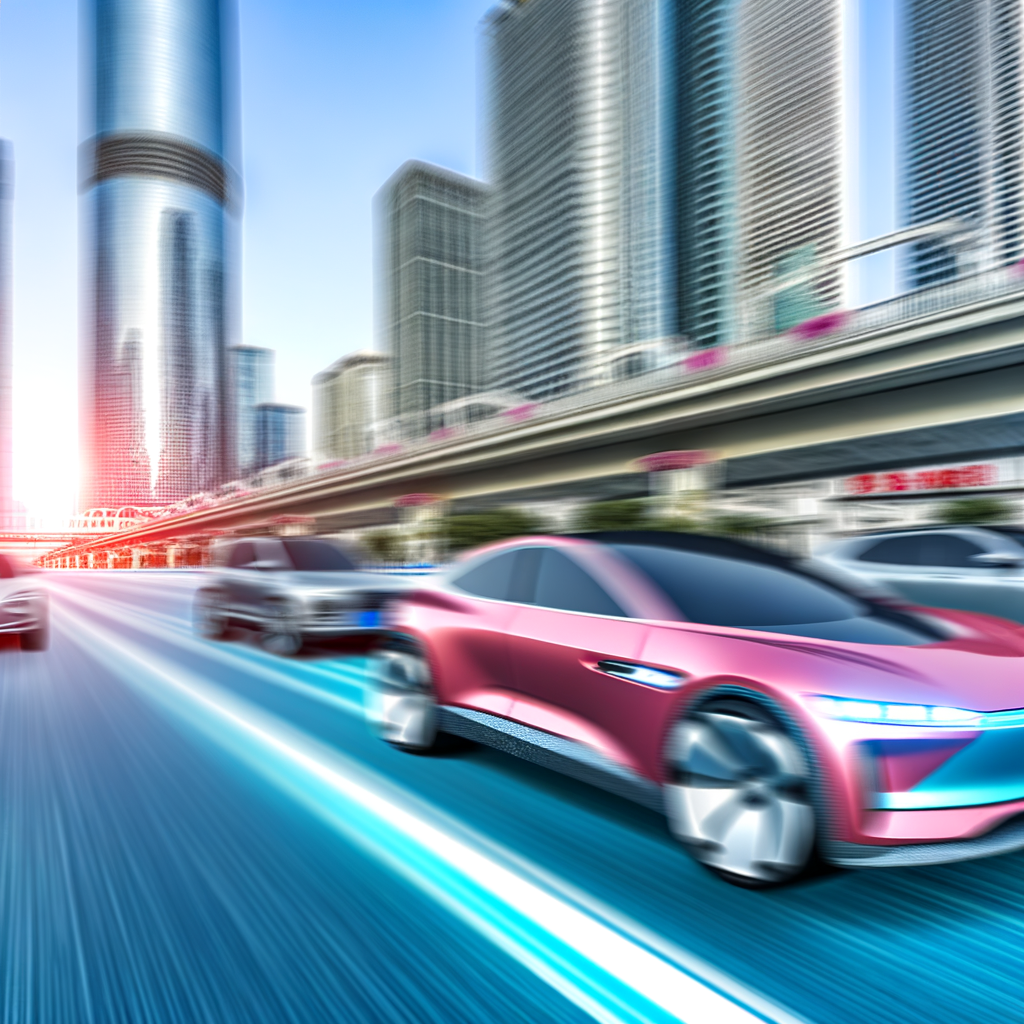
China, the world's largest automotive market, is a top battleground for both foreign automakers and domestic car brands, driven by its growing economy, urbanization, and an expanding middle class's demand for vehicles, especially Electric Vehicles (EVs) and New Energy Vehicles (NEVs). Success in this competitive market relies on navigating a complex regulatory landscape, adapting to consumer preferences, and leveraging technological advancements. Strategic partnerships, including joint ventures, are crucial for meeting regulatory demands and seizing the vast consumer base. Collaborations with technology firms and suppliers are also vital to stay competitive and align with environmental concerns through government incentives. As China leads in promoting EVs and NEVs, understanding government policies, market competition, and consumer trends is key for any player aiming to thrive.
In the fast-paced lanes of global commerce, the China automotive market stands as a colossus, driving ahead as the world's largest automotive market. With a blend of top-tier production and sales volumes, this market's engine is fueled by China's rapidly growing economy, expanding urbanization, and the rising affluence of its burgeoning middle class. As a pivotal arena for both domestic car brands and foreign automakers, China's automotive sector is a complex interplay of consumer preferences, strategic partnerships, and a regulatory landscape that requires adept navigation. The shift towards Electric Vehicles (EVs) and New Energy Vehicles (NEVs) is accelerating, powered by government incentives and mounting environmental concerns, positioning China at the forefront of the automotive industry's sustainable future.
This article delves deep into the intricate gears of the Chinese automotive market, exploring the robust dynamics that make it a highly competitive yet lucrative sector. From "Navigating the Terrain" of regulatory frameworks and strategic alliances to "Revving Up" the market with insights on economic and urban growth fueling automotive demand, we explore every facet that contributes to China's dominance in the global automotive scene. The surge in EVs and NEVs, driven by "Charging Forward," highlights China's commitment to innovation and sustainability, while "Crossing Borders" examines the critical role of joint ventures in bridging the gap between foreign automakers and domestic car brands.
Further, we analyze "Driving Desires" to understand the evolving consumer preferences that dictate market trends, alongside "Green Gears," where government incentives and environmental concerns steer the market towards a greener horizon. "The Innovation Engine" section sheds light on the technological advancements propelling the industry forward, and finally, "The Competitive Circuit" provides a comprehensive view of the market competition that defines the thriving automotive sector in China.
Understanding the China automotive market is pivotal for industry stakeholders looking to navigate its vast landscape successfully. This article offers a roadmap to mastering the complexities of the world's largest automotive market, highlighting the strategic partnerships, regulatory insights, and market understanding necessary to accelerate in this dynamic and challenging environment.
1. "Navigating the Terrain: Understanding the Regulatory Landscape and Strategic Partnerships in the World's Largest Automotive Market"
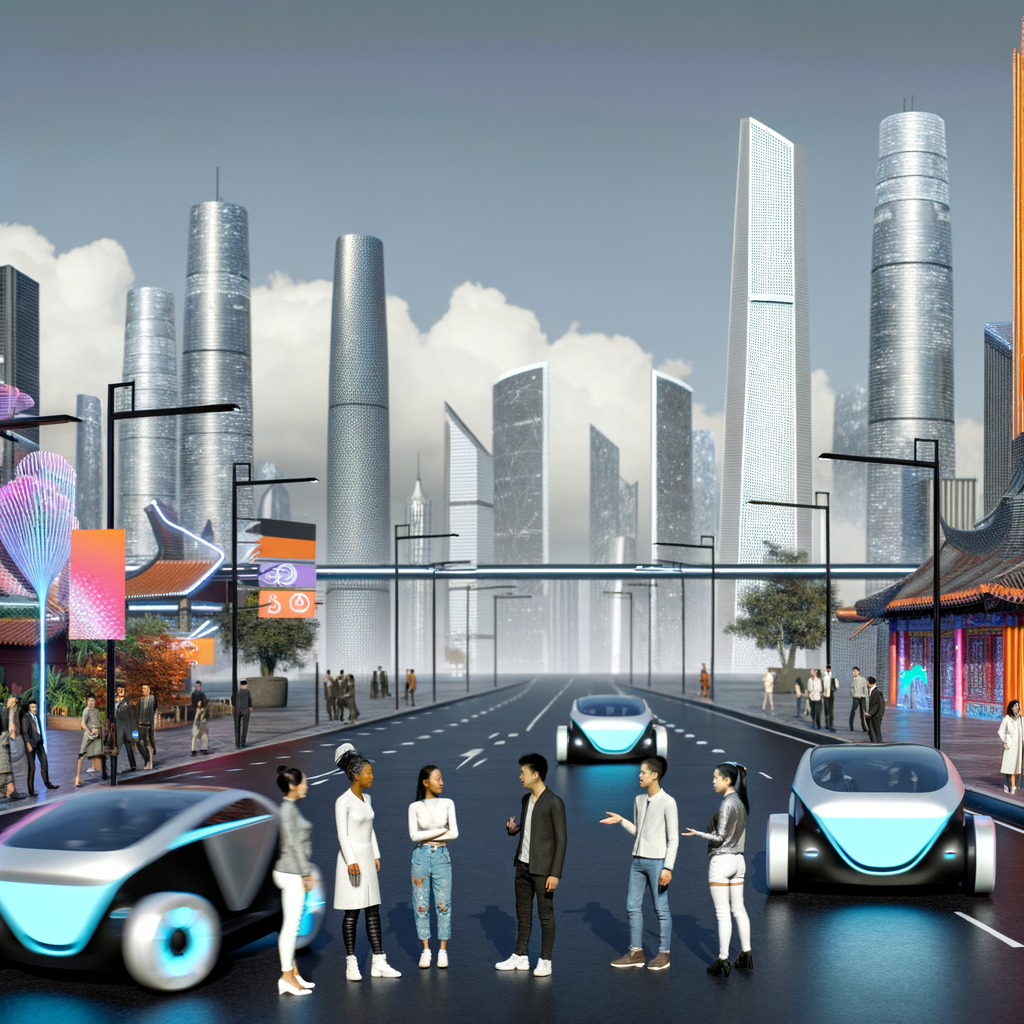
Navigating the complex and dynamic terrain of the world's largest automotive market requires a keen understanding of the intricate regulatory landscape and the importance of strategic partnerships. China's position as the top automotive market is bolstered by its rapidly growing economy, increasing urbanization, and the expanding middle class, all of which fuel a high demand for both domestic car brands and foreign automakers. This demand spans traditional vehicles and is particularly strong for Electric Vehicles (EVs) and New Energy Vehicles (NEVs), driven by environmental concerns and significant government incentives.
The regulatory landscape in China is multifaceted, with policies aimed at promoting the development and adoption of EVs and NEVs to position China as a leader in this emerging market. Foreign automakers looking to tap into this lucrative market face a complex web of regulations and are often required to form joint ventures with local Chinese companies. These joint ventures allow for a sharing of expertise and resources, facilitating navigation through the regulatory environment while accessing the vast consumer base. However, they also necessitate a deep understanding of local consumer preferences, technological advancements, and market competition.
Consumer preferences in China are evolving, with a growing emphasis on technological innovation, sustainability, and brand reputation. This shift is influencing the market competition, pushing companies to innovate and adapt to maintain a competitive edge. Technological advancements, particularly in the realm of EVs and NEVs, are rapidly changing the landscape of the automotive industry, with China at the forefront of these developments.
Strategic partnerships extend beyond joint ventures and include alliances with technology companies, suppliers, and even competitors to leverage collective strengths in technology, manufacturing, and marketing. These collaborations are essential for foreign and domestic car brands alike to succeed in China's highly competitive automotive market. They enable companies to pool resources, share risks, and capitalize on each other's strengths to meet the fast-evolving demands of Chinese consumers.
Moreover, government incentives play a pivotal role in shaping the market dynamics, encouraging both manufacturers and consumers to lean towards more environmentally friendly transportation options. These incentives, coupled with stringent environmental regulations, underscore the government's commitment to reducing pollution and leading the global transition to a greener automotive industry.
In conclusion, understanding the regulatory landscape and the importance of strategic partnerships is crucial for any player in the largest automotive market. Success in China's automotive sector requires a blend of navigating government policies, aligning with consumer preferences, leveraging technological advancements, and forming strategic partnerships. As the market continues to evolve, companies that can adeptly manage these aspects will be well-positioned to thrive in the competitive landscape of China's automotive industry.
In conclusion, the China automotive market stands as a beacon of opportunity and challenge within the global automotive industry. Positioned as the largest automotive market, it continues to grow and evolve, driven by a robust economy, rapid urbanization, and an expanding middle class with increasing demands and preferences for mobility solutions. The market's distinct tilt towards Electric Vehicles (EVs) and New Energy Vehicles (NEVs), fueled by environmental concerns and generous government incentives, has set a unique course for both domestic car brands and foreign automakers.
Navigating this landscape requires a deep understanding of the regulatory environment, which is both a barrier and a gateway for companies aiming to penetrate this lucrative market. Joint ventures have emerged as a strategic pathway, enabling international brands to tap into the vast consumer base while adhering to local guidelines. This symbiotic relationship between foreign automakers and Chinese companies underscores the importance of strategic partnerships in overcoming the complexities of the regulatory landscape.
Moreover, the market's dynamism is shaped by consumer preferences, technological advancements, and the overarching influence of government policies. The competitive arena is not just about offering innovative products but also about adapting to the rapidly changing market conditions, influenced by global economic trends and local environmental policies.
Understanding the China automotive market requires a multifaceted approach, considering all the elements from market competition to strategic partnerships, and from the regulatory landscape to consumer behaviors. For companies willing to navigate these waters, the rewards can be substantial, but success hinges on their ability to adapt, innovate, and forge meaningful collaborations. As we look to the future, the China automotive market remains a critical piece of the global automotive puzzle, reflecting broader trends in urbanization, environmental responsibility, and the shifting sands of consumer demand.
Discover more from Automobilnews News - The first AI News Portal world wide
Subscribe to get the latest posts sent to your email.
China
Trump’s Treasury Tug-of-War: Divergent Views and China Tariffs at the Heart of Mar-a-Lago Meetings

Rumors surrounding Donald Trump's choice for U.S. Treasury Secretary highlight differing opinions within his team
Debate intensifies over China tariffs as prominent advisors to the president-elect, including Elon Musk, advocate for nominees signaling a departure from traditional practices
It is anticipated that Trump will host a meeting with the new contenders at his private Mar-a-Lago estate in Florida this week, while his advisors and aides advocate for their preferred candidates.
Discover more from Automobilnews News - The first AI News Portal world wide
Subscribe to get the latest posts sent to your email.
China
Driver Detained After SUV Incident Injures Children at Hunan School; No Life-Threatening Injuries Reported

Driver Arrested Following Car Accident Near Chinese Elementary School
Following an incident where an SUV crashed into a group outside a school in Hunan province, the driver has been detained. Authorities report that none of the injured, including children, face life-threatening conditions.
A driver was arrested by authorities following an incident where a vehicle plowed into a crowd of parents and children near an elementary school in Hunan province, located in central China.
Authorities in Changde reported that the event occurred at approximately 7:35 AM on Tuesday.
According to the state-run Xinhua news agency, multiple students sustained injuries during the event, though details on the exact number of casualties have not been released.
Authorities reported that those injured were currently undergoing medical treatment, with all individuals in a stable condition and not facing any life-threatening injuries
Authorities identified the suspect as Huang, a 39-year-old male.
According to sources, parents and school security detained the driver when a white SUV plowed into groups of people outside the school.
Discover more from Automobilnews News - The first AI News Portal world wide
Subscribe to get the latest posts sent to your email.
-

 AI1 month ago
AI1 month agoNews Giants Wage Legal Battle Against AI Startup Perplexity for ‘Hallucinating’ Fake News Content
-

 Tech1 month ago
Tech1 month agoRevving Up Innovation: Exploring Top Automotive Technology Trends in Electric Mobility and Autonomous Driving
-

 Tech2 months ago
Tech2 months agoRevving Up Innovation: How Top Automotive Technology Trends are Electrifying and Steering the Future of Transportation
-

 Tech2 months ago
Tech2 months agoRevving Up Innovation: The Drive Towards a Sustainable Future with Top Automotive Technology Advancements
-
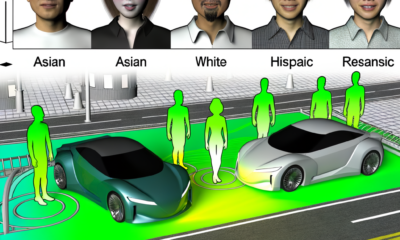
 Tech1 month ago
Tech1 month agoRevolutionizing the Road: How Top Automotive Technology Innovations Are Paving the Way for Sustainability and Safety
-

 Tech1 month ago
Tech1 month agoRevving Up the Future: How Top Automotive Technology Innovations are Accelerating Sustainability and Connectivity on the Road
-

 Tech1 month ago
Tech1 month agoRevving Up Innovation: How Top Automotive Technology is Shaping an Electrified, Autonomous, and Connected Future on the Road
-

 Tech2 months ago
Tech2 months agoRevolutionizing the Road: The Top Automotive Technology Innovations Driving Us Toward an Electric, Autonomous Era







